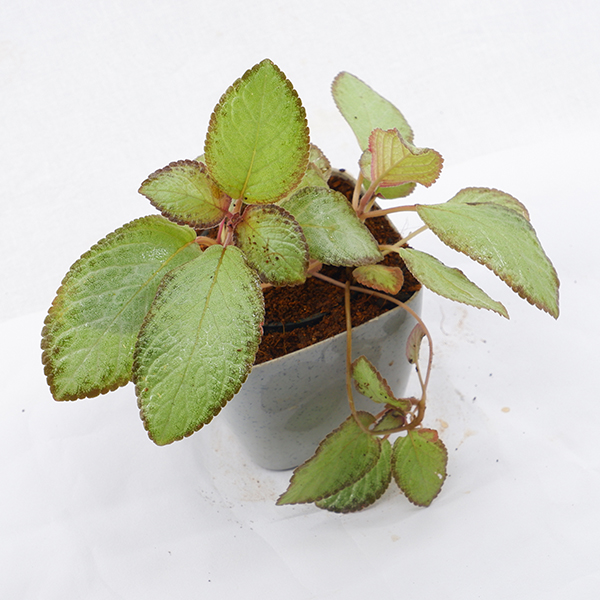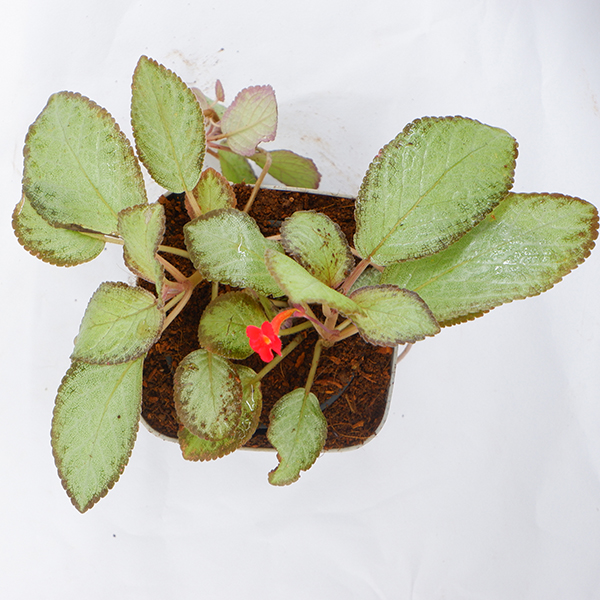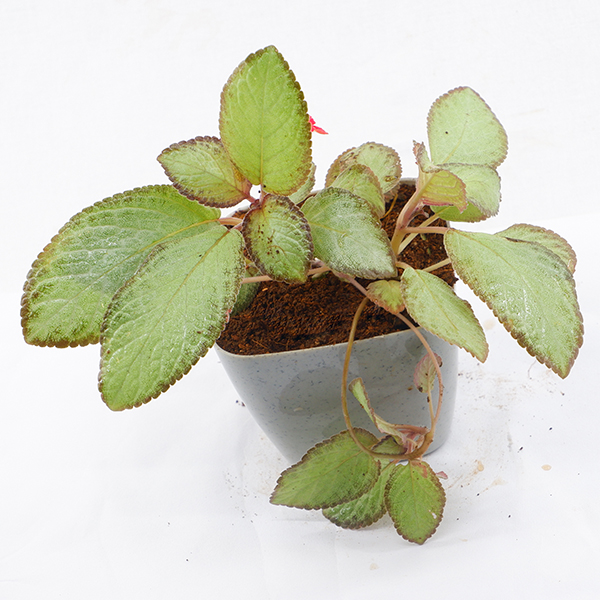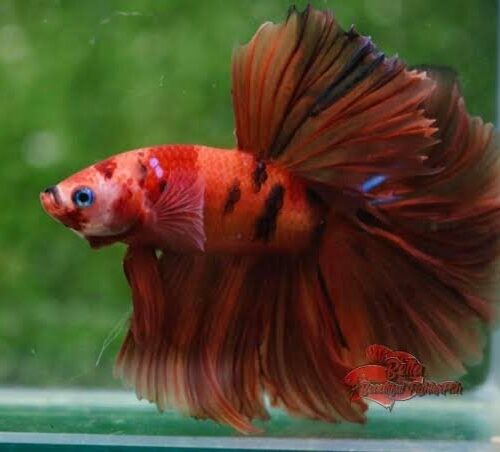Quantity: A single stem with bare roots.
Classifications and Characteristics
Plant Division Angiosperms (Flowering Seed Plants) (Dicotyledon)
Plant Growth Form Shrub (Herbaceous, Trailing)
Lifespan (in Singapore) Perennial
Mode of Nutrition Autotrophic
Maximum Height 0.10 m to 0.15 m
Biogeography
Native Distribution USA (Ohio)
Preferred Climate Zone Temperate
Description and Ethnobotany
Growth Form Herbaceous creeping and trailing shrub with stoloniferous stems, generally up to 15cm height from base.
Foliage Leaves velvety, with pale pink margins and pale green mid-section shaped like oak leaf outlined by a thin white halo. Photos in this plant record show the Canadian clone, said to be hardier than the original ‘Cleopatra’, and plants exhibit chimeric variegation of original genotype in the darker leaf variegation.
Flowers Corolla trumpet-shaped, bright red and furry, lasting 2-3 days.
Others – Plant Morphology Parentage: Chimeric sport of Episcia cupreata ‘Frosty’, cultivated by E. Leo Easterbrook from USA (Ohio), introduced to horticultural world in 1963, and registered with Gesneriad Society, Inc. in 1964.
Cultivation Slow-growing due to lack of chlorophyll, requires more care than other Episcia cultivars. Prefers moist but well-drained media (eg. peatmoss-perlite soilless mix) and high humidity. Avoid waterlogging which causes root and stem rot. Propagate by stolons and stem cuttings.
Etymology Genus epithet ‘Episcia’ derived from Greek word for shaded (‘episkios’), a reference to the natural habitat of this genus of plants. Species epithet ‘cupreata’ means ‘copper-coloured’, describing the reddish foliage colour of the species form.
Landscaping Features
Desirable Plant Features Ornamental Foliage, Ornamental Flowers
Plant & Rootzone Preference – Tolerance Fertile Loamy Soils, Well-Drained Soils
Landscape Uses Hanging Basket, Interiorscape/ Indoor Plant, Focal Plant, Terrarium, Container Planting
Thematic Landscaping Naturalistic Garden
Plant Care and Propagation
Light Preference Semi-Shade
Water Preference Lots of Water, Moderate Water, Occasional Misting
Plant Growth Rate Slow
Maintenance Requirements High
Propagation Method Stem Cutting, Stolon / Runner
Foliar
Foliage Retention Evergreen
Mature Foliage Colour(s) Green, Pink, White
Mature Foliage Texture(s) Smooth, Velvety / Furry / Tomentose, Raised / Sunken Veins
Foliar Type Simple / Unifoliate
Foliar Venation Pinnate / Net
Foliar Margin Entire
Leaf Area Index (LAI) for Green Plot Ratio 4.5 (Shrub & Groundcover – Dicot)
Non – Foliar and Storage
Root Type Underground (Fibrous Root)
Floral (Angiosperm)
Flower & Plant Sexuality 1 Bisexual Flowers
Flower Colour(s) Red
Flower Symmetry Radial
Flowering Habit Polycarpic














Reviews
There are no reviews yet.